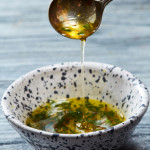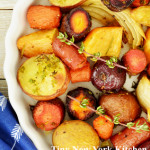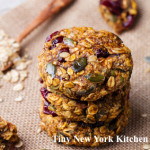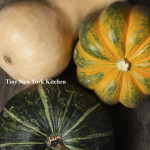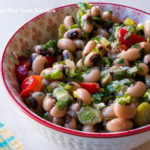Prior to 2014, U.S. states and Canadian provinces each had separate systems for grading their maple syrup. The objective was to quantify the syrup’s distinct range of colors and flavors as the sugaring season progressed. Early in the season, sap tends to yield a lighter, more delicate syrup with vanilla flavor notes. As the weeks go by, darker syrup with stronger, deeper flavor is produced. Whatever the color and flavor, all pure maple syrup has a maple sugar content of 66.9%.
Where there used to be three grades (A through C), all pure maple syrup is now considered Grade A, and consumers must shift their attention to the descriptive language found after the letter grade. Those adjectives have also changed to give more detail.
Golden Color & Delicate Taste: The lightest and most delicate syrup, best enjoyed in poured-over form; formerly known as “Fancy.”
Amber Color & Rich Flavor: Amid-season syrup, darker and more robust. Good for glazes, baking, and stirring into cocktails or over hot cereal; formerly known as Dark Amber or Grade B.
Very Dark & Strong Flavor: The darkest and most intense of all the grades, it’s suited to use in recipes that call for molasses. Until recently, this syrup wasn’t sold to consumers: it went to candy and commercial food producers for maple-flavored products. Formerly known as Grade C.
“Work With What You Got!”
©Tiny New York Kitchen © 2018 All Rights Reserved
In a bowl mix baby greens or baby spinach with 1 peeled, quartered and thinly sliced apple or pear. 1 apple or pear for every 2 people. Pour over enough Maple Mustard Dressing to moisten. Transfer to salad bowls and garnish with toasted chopped pecans and crumbled gorgonzola cheese. Enjoy!
“Work With What You Got!”
©Tiny New York Kitchen © 2018 All Rights Reserved
This fall Tiny New York Kitchen celebrates sweet parsnips, earthy beets, and mild turnips. These root vegetables offer flavor, nutrition, and versatility.
Look for root vegetables that are firm to the touch with smooth, blemish-free skin. If there are any greens attached, make sure they look fresh, not wilted.
Before storing parsnips, beets, and turnips, remove any greens and brush off any dirt. Wrap in a damp paper towel, place in a plastic bag, and store in the refrigerator crisper; most roots will last up to two weeks.
Root vegetables absorb nutrients from the soil they grow in, including antioxidants, iron, and vitamins A, B, and C. They also provide fiber, which helps you feel fuller longer. To maximize your fiber intake, leave the skin on and give parsnips and carrots a good scrub instead.
Parsnips: These pale, carrot-like root vegetables are sweet and earthy. They can be roasted, sautéed, mashed, and puréed. Choose small to medium parsnips, since larger ones can be woody.
Beets: Beets can be red, golden, or striped. Whether roasted, boiled, or steamed, they’re slow to cook, but packaged precooked versions are also an option. You can even enjoy beets raw. Simply peel and grate or thinly slice.
Turnips: Creamy white with pinkish-purple tops, turnips turn mellow and tender when cooked. Try them roasted, sautéed, mashed, or added to soups and stews.
Greens: If you’re lucky, your beets and turnips will have greens attached. These edible, nutritious, and delicious greens should always be removed for storage, as they pull moisture from the root ends. Wash the greens and use to make pesto, or sauté with garlic and oil for a quick side dish or simple pasta.
“Work With What You Got!”
©Tiny New York Kitchen © 2018 All Rights Reserved
Cheesy baked pasta is even more fun when you can slice it into wedges.
The leaves are turning, the mornings have a crisp bite and apple picking excursions are underway. Many of us are ready for autumnal flavors and when you’re drinking your pumpkin spice tea consider making this delicious Pumpkin Carbonara.
Beautiful autumn! The tapestry of autumn is tinged with splendor, as nature sheds its robe of green and garbs itself in the richly textured colors of fall. As leaves begin to turn deep shades of burnt orange, russet, gold, umber burgundy, cooks seek out lavish and luscious seasonal ingredients.
Apples
Pears
Cranberries
Persimmons
Pomegranates
Cabbage
Rutabaga
Turnips
Cauliflower
Beets
Sweet potatoes
Pumpkins
Squash
“Work With What You Got!”
©Tiny New York Kitchen © 2018 All Rights Reserved
We love autumn, but we’re giving it one last-ditch effort to savor the remaining glimmers of summer. You may frost this cake or leave it plain.
How to cook rich, perfectly roasted winter squash without any prep work. This method works for winter squash of any size, so adjust the roasting time as needed.
Preheat oven to 400 degrees.
Roast the whole squash on a baking sheet until the skin is papery and a fork inserted into two or three different spots reveals very tender flesh (45 minutes per pound).
Remove from oven and set aside until cool.
Breakfast. Lunch. Dinner. Have squash for them all!
Start by cooking a whole winter squash.
Breakfast
Add cooked cubes of butternut squash, grated Gruyere cheese and chopped sage to a frittata mixture.
Lunch
Meal-prep lunches by layering cooked spaghetti squash, marinara sauce and meatballs or shredded chicken.
Dinner
Add thick slices of cooked acorn squash (you can keep the skin on) to soup or stew during the last few minutes of cooking.
“Work With What You Got!”
©Tiny New York Kitchen © 2018 All Rights Reserved
The maple cream cheese filling really adds to the Pumpkin Whoopie Pies.
“Work With What You Got!”
©Tiny New York Kitchen © 2018 All Rights Reserved


